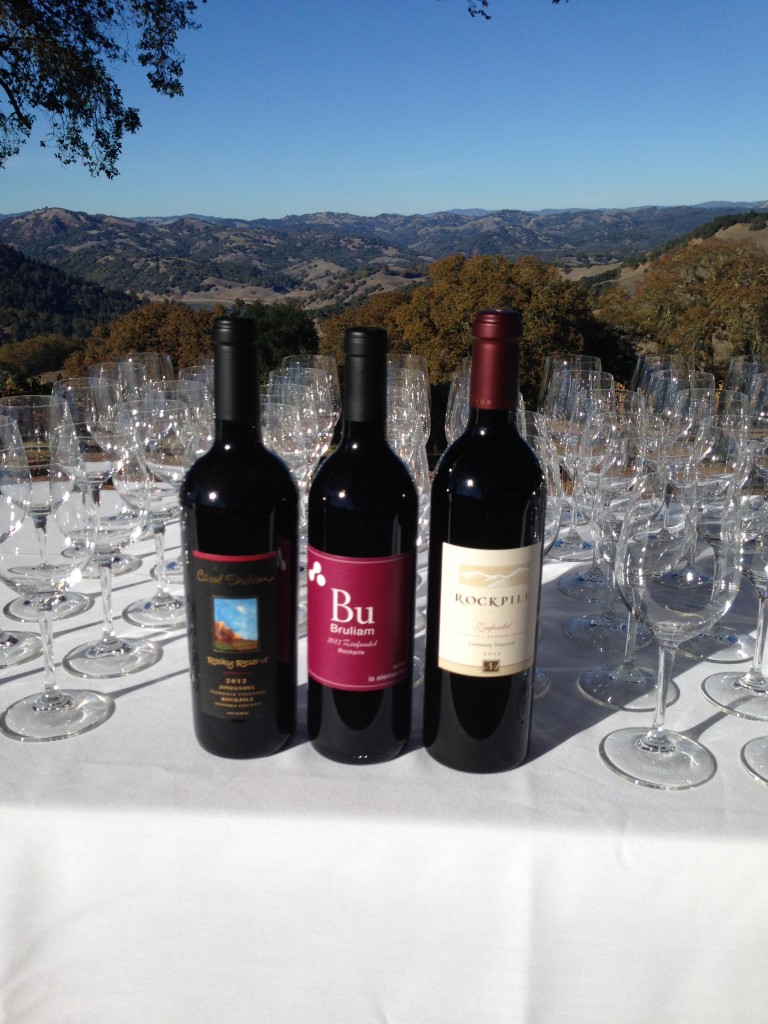Zinfandel - the Bastard Cousin of Pinot Noir?
I’d hit delete before I could fully process the message. I’d haphazardly scanned the headlines before my eyes processed the words, “If Zinfandel was treated more like Pinot Noir…” Huh? I backtracked to my “trash” folder, frantically trying to recapture the lost e mail blast. I’d been spouting that same rhetoric for at least 2 years. In fact, during my recent Rockpile seminar, I’d told a group of nation-wide sommeliers exactly that.
“Since I make predominantly pinot noir, I’ve come to treat my zin a lot like pinot. I use an extended cold soak; I am practicing some battonage after fermentation, and aging my zin in 100% French oak. I am aiming to craft an elegant, pretty, food friendly zin with restraint but one that also showcases the beautiful Rockpile terroir.”
I’d thought I’d been brave, cutting-edge, and unique in my approach. Sure, harvesting Rockpile zin at 22.5 brix is controversial (read: “ballsy,” “stupid,” “insane,” and “stupid”). Still, I knew it’d soak up to 24+, putting my final alcohol right around 14.2/14.4%. I’d taken a calculated risk. And it had paid off. My 2012 Rockpile zin is indeed my most feminine, elegant, and nuanced to date. It’s a pretty wine with fetching aromatics, oceans away from the homogenized, hot, jammy plonk that makes hipster sommeliers recoil. But now Lodi winemakers are onto my gig.
In “Lodi Winemakers Strip Back Their Zinfandel,” W. Blake Gray describes a small coterie of Lodi vintners who are picking at lower brix and fermenting with native yeast. Randy Caparaso explains, “You have to pick at lower sugars so the wines will ferment. It changes your thinking, drastically, about viticulture. It becomes more of a Pinot thinking. Zinfandel is kind of like Pinot.” And indeed it is. My thin-skinned, disorderly ripening, persnickety, and perpetually stressed out Rockpile block is more neurotic than any pinot I’ve sourced. Dry-farmed, low yielding, and viticulturally brittle, this fruit can pivot from not-quite-ready to way over-ripe in days. Zin is not easy.
My approach is divisive. The 2012 zin inspires passion from all sides. I recently heard a SoCal wine retailer wax poetic about its “minerality and subtle spice and rather feminine structure and elegance.” At the Rockpile seminar, a NorCal wine buyer confidentially copped, “I hate zin, but I like yours.” In the other camp, my Texas distributor quipped, “You don’t put pretty and zinfandel in the same sentence.” He wants a zin to tear you up and throw you down and make you beg for mercy. He pantomimed a choke-hold with his fists. That’s all well and good. There is a place for all of us.
As for me, I’m proud to source Rockpile fruit and stand alongside such stellar zin-bassadors as Carol Shelton and Clay Mauritson. We’re the luckiest ones. We start with remarkable fruit; our outcomes are fated to deliciousness. Like I told the Sonoma Summit sommeliers,
“What’s most special about today is that we winemakers are allowed share so many faces and facets of Rockpile with you. This terroir can be fierce, masculine, aromatic, elegant, boldly tannic, or brambly-dark fruit forward. The permutations and fantastic outcomes are limitless.”

